Inflammatory diseases of the lips, when their red border or mucous membrane is affected, are called the collective term "cheilitis". However, in essence, this term only indicates the place where the inflammation is localized.
The fact is that lip diseases can have different etiologies – inflammation can be caused by bacterial or viral infection, external environmental factors, trauma and chemical agents, as well as provoked by neurological and endocrine diseases, allergies and immunodeficiency states.
For information on how some lip diseases manifest, read on estet-portal.com.
For what reasons can lip diseases develop
Lips are very vulnerable to any damaging factors, since they do not have a protective stratum corneum, and the sebaceous glands that can provide them with hydrolipid protection are hidden only in the corners of the lips. Among the reasons why lip diseases can develop, it should be noted:
- changes in temperature and humidity, causing damage to the mucous membrane and the development of cracks;
- irritation of the skin of the lips by hot and spicy food;
- smoking;
- lip injury, including biting;
- use of low-quality cosmetics that dry and irritate the lips.
The listed reasons lead to damage to the mucous membrane of the lips, which is fraught with inflammatory processes, the addition of an infection
Doctors are increasingly stating lip diseases associated with endocrinological disorders, stress, with a general decrease in immunity, with allergic diseases.
How do lip diseases manifest themselves due to various causes
Exfoliative cheilitis. Lip disease is provoked by nervous disorders, depression, severe stress. Sometimes hyperthyroidism can be the cause, and the rash of herpes simplex becomes the trigger factor. Patients complain of burning and peeling of the lips, a feeling of tightness.

Characteristic features: lips are slightly swollen, the red border is inflamed and covered with thin transparent scales that reappear even when removed. Under the scales, bright hyperemic skin is found, but without erosion, the scales themselves do not pass either to the skin or to the mucous membrane of the lips.
Glandular cheilitis. Lip disease occurs due to inflammation of the salivary glands. Characterized by "dew symptom" - droplets of saliva on small nodules that appear on the border between the mucosa and the red border. The very red border of the lips is dry, flaky, sometimes & nbsp; covered with cracks and erosion.
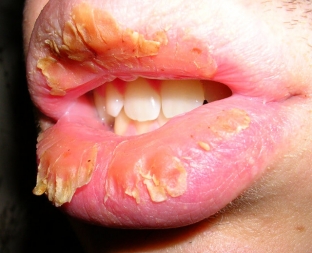
Meteorological cheilitis. Inflammation of the lips is caused by wind, temperature and humidity changes, dusty air, and sometimes insolation. The disease is often combined with seborrheic eczema, neurodermatitis. The red border of the lips is inflamed and swollen throughout, covered with scales. At the same time, the mucous membrane of the lips and the skin do not suffer.
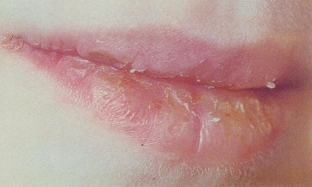
The danger of meteorological cheilitis is that with its prolonged course, a transition to a precancerous state is possible.
Actinic cheilitis. Lip disease develops as an allergic reaction to the sun's rays. The lower lip is affected – the red border is inflamed and covered with silvery scales, sometimes keratinization and verrucous growths develop. Patients complain of itching and burning, without timely treatment, an unfavorable prognosis is possible.
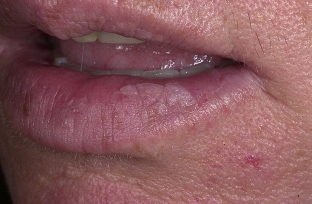
Eczematous cheilitis. It develops as a condition accompanying eczema, manifested by itchy vesicles, inflammation of the surface layers of the lips. The patient complains that it is difficult for him to talk and open his mouth. Lips swell significantly, inflammation may spread to the surrounding skin.
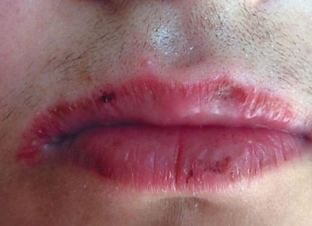
Macrocheilitis. The disease develops as a result of impaired lymphatic drainage. Lips swell a lot, but do not hurt. Swelling is dense, can lead to tissue fibrosis and deformity of the lips.
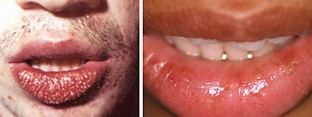
Knowledge of the main manifestations of lip diseases will allow the doctor to prescribe adequate treatment in a timely manner and prevent the adverse development of the process.









Add a comment